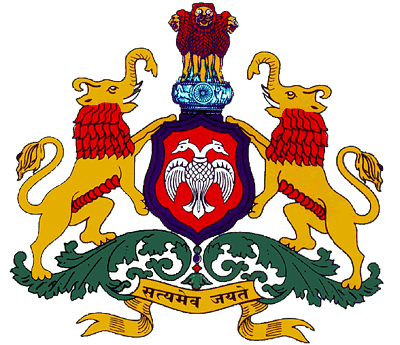
10 Interesting Facts About Karnataka
On the occasion of Karnataka Rajyothsava (56th anniversary) on November 1st here is a list of 10 interesting but less known facts about Karnataka.
1. Kittur Rani Chennamma
Queen of the princely state of Kittur, she was one of the first woman to lead an armed rebellion against British governance and kappa tax in 1824. This was more than three decades before Rani Lakshmibai of Jhansi in 1857, after the British refused to recognize her adopted heir Shivalingappa. She was captured and imprisoned in Bailhongal fort where she died in 1829. Rani Chennamma’s statue was unveiled in the Indian Parliament complex by President Pratibha Patil.
The famous Kannada biopic on her has dialogues adapted from a movie on another famous southern Polygar – Veerapandia Kattabomman. This is not surprising considering both the biopics were directed by the famous director B.R.Panthulu.
2. Karnataka Khadi Gramodyoga Samyukta Sangha (KKGSS)
The KKGSS, in Bengeri in Hubli, is the only unit in India that is authorized to manufacture and supply the Flag of India. Set up in 1957, the khadi flag conforms to the Bureau of Indian Standards benchmarks.
3. Purandara Dasa (1484-1564)
Known as the “Father of Carnatic Music”, he was born near Tirthahalli in Shivamogga (Shimoga) district. He systematized the entire system of teaching Carnatic music that is followed to this day. He introduced the basic scale for music instruction (composing Raga Mayamalavagowla) and fashioned a series of graded lessons.
He fused bhava, laya and raga in his compositions. The standardisation of varna mettus has been attributed entirely to Purandara Dasa. About 1000 of his compositions are still extant. His influence on Hindustani music too has been profound. For example, Tansen’s teacher, Swami Haridas, was Purandara Dasa’s disciple
4. Sir M Visvesvaraya (1860-1955)
Bharat Ratna awardee: He was born in Muddenahalli village about 40 miles from Bengaluru. His birthday 15th September is celebrated as Engineer’s Day in India. He was a pre-eminent engineer, scholar, statesman and also the Diwan of the princely state of Mysore from 1912-1918. He was the chief engineer for the KRS Dam in Mysore, designed the flood protection system for Hyderabad, Khadakvasala (Pune) and Gwalior and a sea erosion protection system for Vishakapatnam.
He also set up the UVCE Engineering college in Bengaluru in 1917, the Mysore Soap Factory, the Parasitoide Laboratory, the Mysore Iron & Steel Works (now known as Visvesvaraya Iron and Steel Limited) in Bhadravathi, the Sri Jayachamarajendra Polytechnic Institute, the Bangalore Agricultural University, the State Bank of Mysore, The Century Club, Mysore Chambers of Commerce and numerous other industrial ventures. He encouraged private investment in industry during his tenure as Diwan of Mysore. He was instrumental in charting out the plan for road construction between Tirumala and Tirupati.
5. Akashvani (All India Radio)
This is what the All India Radio is officially known as since 1956. The term Akashvani was coined by MV Gopalswamy of Mysore after setting up the nation’s first private radio station in his residence, “Vittal Vihar” in 1936. Akashvani means celestial announcement. The word, of Sanskrit origin, is often found in Hindu mythology. When the gods wished to say something, an akashvani occurred. Literally, “akash” means “sky” and vani means “sound” or “message”. Thus, Akashvani seemed suitable for a radio broadcaster and was later adopted by the All India Radio after independence.
6. Vijayanagara Empire (1336-1646)
Hampi (a UN World Heritage Site) was the erstwhile flourishing city of Vijayanagara, the capital of the empire. One may not realize that it lasted longer than the Mughal Empire and covered an area that was comparable if not larger.
7. Karnataka State
The state of Mysore state was formed on November 1st 1956 after the States Reorganization Act. Effective from 1973, the state became known as Karnataka.
8. Devanahalli
This is now the site of the new Bengaluru airport and is the birthplace of Tipu Sultan.
9. Jnanapith Awards
Karnataka hosts the maximum number of Jnanapith awardees. The state has won eight.
10. Chanakya or Kautilya’s Arthashastra
(one of the world’s oldest and finest treatises on statecraft, economic policy and military strategy written in 4th century BC): The oldest surviving manuscript of the Arthashastra is in the Oriental Research Institute set up as the Mysore Oriental Library in 1891. Scholar and Indologist, Rudrapatna Shamasastry, discovered the manuscript in its original Grantha script in 1905, translated it into Sanskrit in 1909 and into English in 1915. This gave Indians and the world a masterpiece.
Reproduced with the author’s permission.